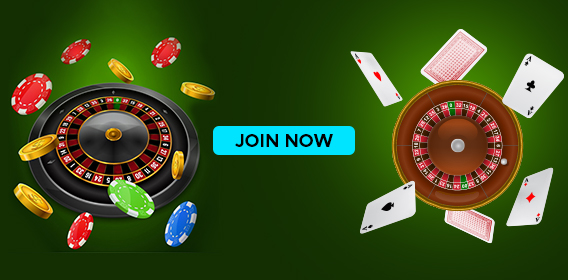The Roulette wheel serves the most important function in the game and its one and only purpose in the game is determining winning bets. It’s the fixed point of the horizon on which every player has his eyes on. A slight difference or one number left or right can determine whether you’ll win or lose. So, it’s very important for players to study the physical and mechanical aspects of the Roulette wheel.
In this article, we’ll take a look at everything you need to know about the Roulette wheel. Read on!
Origins of the Roulette wheel
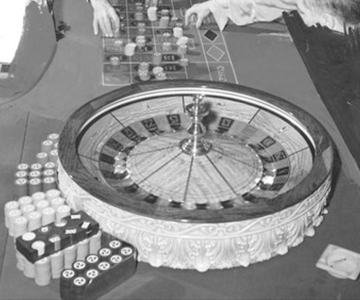
As with many other casino games, the origins of Roulette are shrouded in mystery. The most widely accepted theory about the history of live Roulette is that the first version of the game was created by French mathematician Blaise Pascal in the 17th century when he worked hard to create a perpetual motion machine. A second theory suggests that the game was discovered by Dominican monks who were involved with all the aspects of Chinese life and was later brought by them to Europe, with some modifications. Unfortunately, there’s no evidence to prove this.
While the game of Roulette is undoubted of French origin (because of the name), the design and gameplay are influenced by two popular games of the 17th century: ‘Even-Odd’ and ‘Roly Poly’. Both these games involved spinning a perpetual motion machine and wagering on the outcome of the spin.
Roulette wheel layout

As mentioned earlier, the Roulette wheel is the main part of the game which determines the winning bet. If you’re new to the game of online Roulette, you would assume that the numbers on the wheel go in a sequence of 0 to 36. But the numbers are arranged in an apparent order around the wheel. Also, the wheel is divided into black and red pockets, with a green pocket representing the zero. For the untrained eye, there would be no difference between the different types of wheels. But a closer look will tell that there’s a significant difference between the different types of the Roulette wheel.
Kinds of Pockets
Many players who know the game very well, go to considerable lengths to maximize their profit margin, and choosing the right roulette wheels is one way to do it. There are many suggestions about the tactics to be used to achieve an (unfair) advantage over the property, so it is worth considering certain assumptions.
Why there is such a vast variety of roulette wheels and why even the pockets are so different is explained by a large number of suppliers. A trend has grown with most casinos using roulette wheels that have shallow pocket pads, contributing to wide ball dispersion. The pockets themselves may be either forged into a block of metal or separated by the intelligent use of metal frets (separators).
- Frets of the same height at both ends are used on most roulette wheels, but there are also wheels where the frets collapse towards the centre. Where the ball will inevitably land is tougher to foresee, since it can quickly leap the small gap to the next number.
- Tiny but even frets are even more widespread and this is a kind of wheel that is favoured by land-based casinos because it makes the game more intense. Balls hop quickly and players will be mistaken to believe that they would stick in position even though they originally enter a pocket. The higher the frets, the more unlikely it is to get bouncing balls, but casinos prefer to appeal more to adrenaline junkies.
- The one featuring curved frets is another kind of roulette wheel that does not favour ball hopping. This is a solution since the balls pass effortlessly in a smooth fashion from one number to the other without dropping into the pocket on which they first fall.
- There are no curve frets on a few roulette wheels, but instead, they feature curved pockets that have almost the same effect. The biggest distinction is in the fact that players do not visualize any form of bouncing when it comes to predicting the final resting position of the ball while being just as powerless. These kinds of wheels are less numerous, however easily gain momentum, and in brick-and-mortar casinos, we should expect more of them to grow.
Manufacturers are allowed, without modifying the game itself to discover new ways to change the roulette wheel. It is mandatory to keep it equal, but they enjoy a lot of flexibility when tinkering with the scale and form of the pockets as well as the frets. The visual effect is fascinating, but it reflects just the tip of the iceberg since the result varies slightly with each form of the roulette wheel and each variation. As random as ever, Roulette persists, but this will not deter pundits from seeking to identify trends.
More about the roulette wheel
Roulette wheel numbers – You can find 37 pockets for the numbers 0 through 36 in the traditional European layout. The European or French Roulette is the world’s first roulette, with a single zero on it and coloured green. 26, 3, 35, 12, 28, 7, 29, 18, 22, 9, 31, 14, 20, 1, 33, 16, 24, 5, 10, 23, 8, 30, 11, 36, 13, 27, 6, 34, 17, 25, 2, 21, 4, 19, 15 and 32 are the remaining 36 numbers. Eighteen of them are painted black and the other eighteen are painted red.
However if you look at the American equivalent, it has two zeros, including the same set of numbers that are non-zero but placed in a different order on the wheel. There are therefore 38 slots altogether, out of which there are two zeros.
Roulette wheel number sequence – The roulette wheel pockets are numbered from 0 to 36.
The odd numbers are red and even black for numbers ranging from 1 to 10 and 19 to 28. The odd numbers are black and even are red in the 11 to 18 and 29 to 36 ranges.
There is a pocket painted green, numbered 0.
There is a second green pocket marked 00 in American roulette.
On the roulette wheel, the pocket number order adheres to the following clockwise sequence in most casinos.
- Single-zero wheel
0-32-15-19-4-21-2-25-17-34-6-27-13-36-11-30-8-23-10-5-24-16-33-1-20-14-31-9-22-18-29-7-28-12-35-3-26
- Double-zero wheel
0-28-9-26-30-11-7-20-32-17-5-22-34-15-3-24-36-13-1-00-27-10-25-29-12-8-19-31-18-6-21-33-16-4-23-35-14-2
- Triple-zero wheel
0-000-00-32-15-19-4-21-2-25-17-34-6-27-13-36-11-30-8-23-10-5-24-16-33-1-20-14-31-9-22-18-29-7-28-12-35-3-26
Sum of the numbers on a roulette wheel – The sum of all the numbers on the wheel of the Roulette comes out to be 666, also known as “Number of the Beast”.
European Roulette
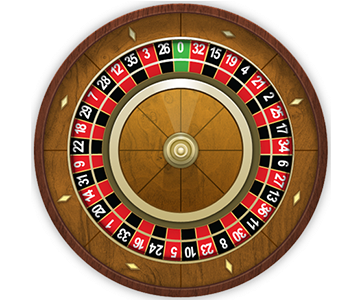
The European Roulette wheel features a single zero, which makes it a better choice for players who want to offset the effect of variance. Due to the single zero, the house edge is significantly reduced, and in the long run, players will be winning significantly more. The zero slot is green in colour, and the other 36 numbers are split in half, with 18 being black and other red.
The clockwise sequence of numbers on Roulette wheel looks like: 26, 3, 35, 12, 28, 7, 29, 18, 22, 9, 31, 14, 20, 1, 33, 16, 24, 5, 10, 23, 8, 30, 11, 36, 13, 27, 6, 34, 17, 25, 2, 21, 4, 19, 15, and 32.
American Roulette
When playing American Roulette in online and live casinos, you’ll notice that there are a total of 38 pockets on the American wheel, ranging from 0 to 36, plus the additional 00 number. 18 of these pockets are red, the other 18 are black, while the two pockets featuring 0 and 00 are green.
The counterclockwise sequence on the American Roulette wheel looks like: 0, 2, 14, 35, 23, 4, 16, 33, 21, 6, 18, 31, 19, 8, 12, 29, 25, 10, 27, 00, 1, 13, 36, 24, 3, 15, 34, 22, 5, 17, 32, 20, 7, 11, 30, 26, 9, 28.
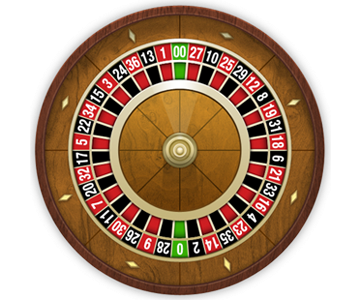
The Roulette Ball
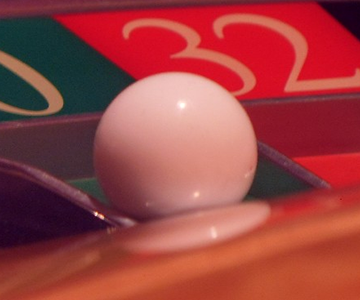
The measurements of the wheel and its numerical pockets are proportional to the roulette balls. Wide wheels with a diameter equal to 27, 30 or 32 inches are used by serious casinos. The balls used are 18mm and 21mm respectively. Traditionally, they alternate between one “small” (18mm) and one “big” (21mm) ball once a day to make the results even more random, with the non-playing ball lying on top of the middle of the roulette, waiting patiently for its turn. Quality casino balls are made of ivory, while Teflon is often considered a suitable material.
The material used to be ivory from old roulette balls. The balls today are called ‘ivorine’ and are not made of natural ivory; they are simply plastic and resemble the look and sound of ivory. Other products such as resin, Teflon and even ceramic have also created professional roulette balls in recent years. The changes in ball dimensions, weight and content have a noticeable influence on the game.
On the wheel track, a small lightweight ball made up of ceramic makes more revolutions and bounces more unpredictably as it falls until it lands on a number than a big ivory ball.
Using anti-magnetic and unpredictable balls to discourage gamblers and casino cheaters is in the best interest of the casinos. Some new anecdotal findings have been released about piezoelectric roulette balls used in rigged roulette games.
Roulette wheel odds
Wagering on real money Roulette games requires that you’re familiarised with the Roulette terminologies and the odds and house edge that the casino has to offer. The chances of winning in Roulette are greatly affected by the type of Roulette variant you’re betting on, and the extra rules that come with betting.
It’s known that European Roulette offers better odds than the American one. This is because the American Roulette wheel has an extra 00, which increases the house edge from 2.7% to 5.26%.
Nevertheless, to play Roulette, you need to understand the two main types of bets – inside bets and outside bets. Inside bets have less probability of winning, so they have bigger odds. On the other hand, outside bets have much higher chances of winning and have much smaller odds. When playing Live Roulette, there are spaces on the Roulette table for making bets on a particular number (inside bets) and additional options (outside bets).
Inside bets
There are six different types of inside bets in Roulette, including Six Line, Trio, Split, Corner, Street, and Straight-Up. The inside bet with the lowest chance of winning is Straight-Up, where you’ll be betting on a specific number. For example, if the player places a bet on red 15, then they can only win if the ball lands on red 15. In this case, all other players’ stake becomes losing bets unless they place bets on red 15 as well.
When using the Split bet, you’d be placing bets on two adjoining numbers such as 25 and 26. With Trio and Street bets, you’d be placing your bets on three different numbers in a horizontal line. For example, you can place a bet such as 16, 17, 18 or 31, 32, 33 in Street bet. In a Trio bet, you can place a bet on either 0, 1, 2 (European Roulette) or 00, 2, 3 (American Roulette).
Six Line bets can be assumed as a combination of two consecutive street bets. Here you can bet on six numbers like 10, 11, 12, 13, 14, and 15. Corner bets are bets placed in a square format such as 4, 5, 7, 8.

Outside Bets

There are also six different types of outside bets in Roulette. They include:
- 1 to 8 – Players can place their bets on numbers 1 through to 8
- 19 to 36 – Bets placed on numbers 19 to 36
- Red or Black – Bets placed on either red or black numbers
- Even or Odd – Players can place bets either on even or odd numbers
- Column bets – Bets placed on numbers down a vertical line like 3, 6, 9, 12, 15, 18, 21, 24, 27, 30, 33, 36.
- Dozen bets – Bets placed on numbers between 1-12, 13-24, or 25-36.
The logic of the wheel layout
In both American and European Roulette, the order of the numbers on the wheel track is totally different from what their arithmetic value would suggest it to be. This is one of the reasons why Roulette is such a balanced game in theory. The order of numbers on the wheel is well thought in order to accomplish the following things:
Confuse the player
As a novice player, it’s quite hard to make a mental picture of the wheel and understand the relations of the numbers and sectors. This makes it very difficult to bet on specific sectors. And the Roulette table layout can add to the confusion.
Low (1-18) and High (19-36) numbers should alternate as much as possible
In the case of European Roulette, the only point where this condition is not met is the 5 next to 10. As for the American wheel, there are many sectors with adjacent and adjacent high numbers. So, the American wheel is not considered to be as balanced as the European one.
The colours should alternate completely on the wheel
In both American and European Roulette, two consecutive numbers should have different colours. Furthermore, the colour distribution on the wheel should be as balanced as possible, but this is of much less concern than the previous condition.
Distribution of odd and even numbers
Odd and even numbers should be evenly distributed along with the wheel with no more than two even or two odd numbers adjacent to each other.
Deceleration rates and the effect on gameplay

Roulette has been one of the most popular casino games for centuries and is here to stay. So, it won’t be wrong to assume that Roulette players will keep trying to beat the game. Over the years, there have been various attempts at beating Roulette.
Today, Roulette wheels are equally precise tools that don’t age easily and that don’t malfunction. Technology has solved various traditional issues associated with the game, but it has also brought up new challenges such as dealing with Roulette deceleration.
As the name suggests, deceleration is about the ever-decreasing speed at which the ball travels across the wheel, until it lands in a pocket. Manufacturers are trying their best to come up with Roulette wheels that have no slowdown and their efforts are appreciated by the croupiers. A lot of progress has been made in this direction and the modern wheels are virtually unaffected by deceleration.
Online Roulette players don’t need to worry about this as the wheels are actually computer software at work. But land-based casino operators have different ideas. Deceleration makes it difficult for high rollers and professional Roulette players to take full advantage of their Roulette betting systems, therefore casinos love it.


